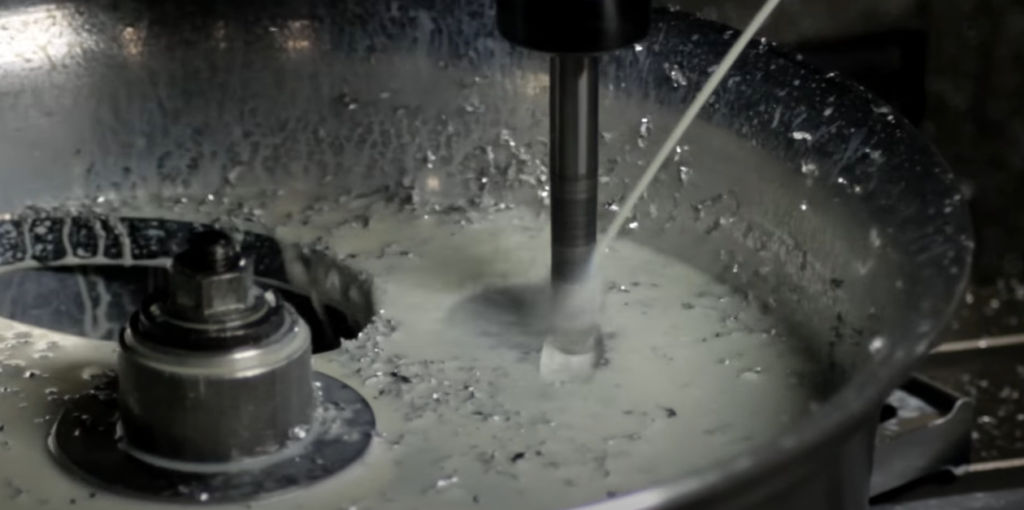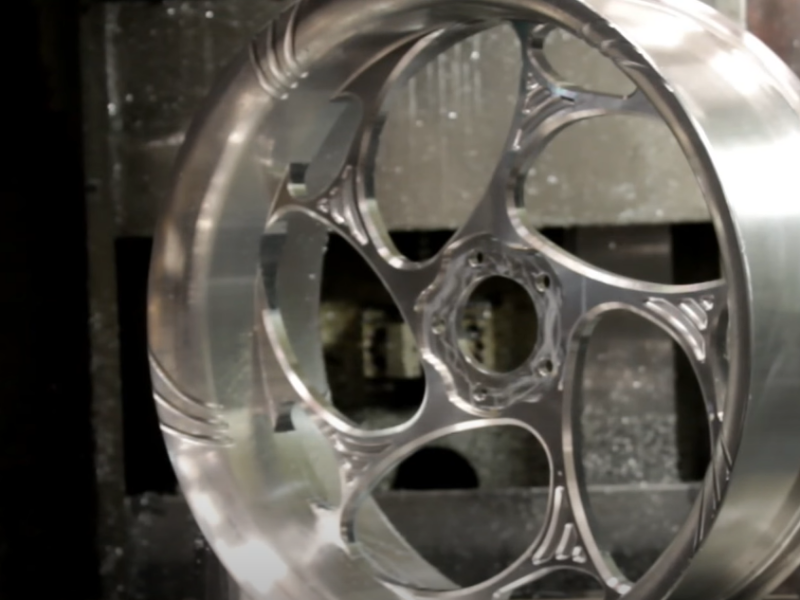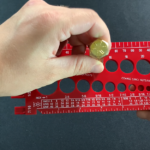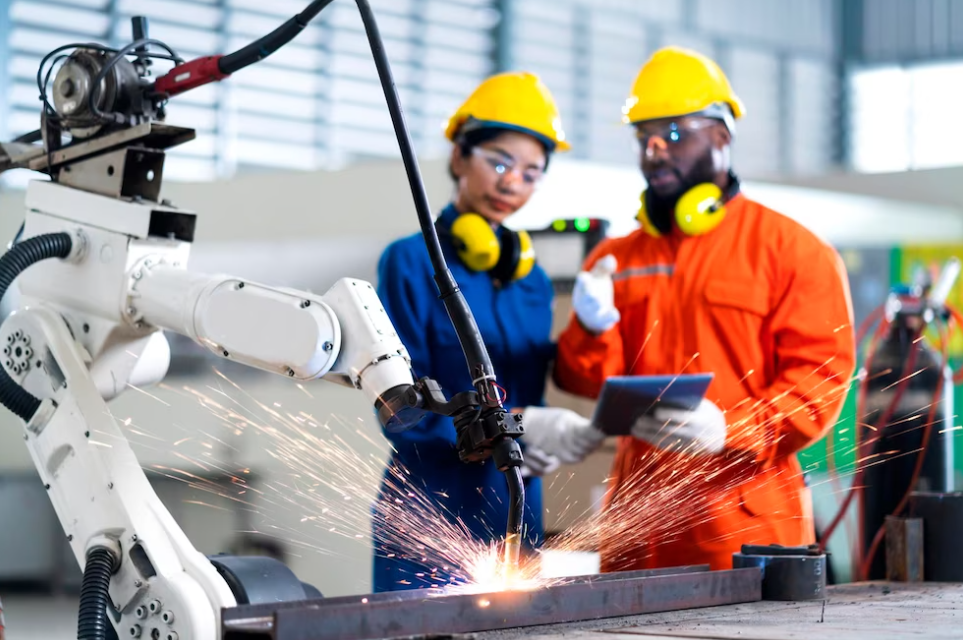The advent of Computer Numerical Control (CNC) technology has revolutionized the manufacturing industry, with CNC machining wheels representing a prime example of this transformation. Here, we delve into the intricate process of CNC machining wheels, discussing key aspects like material selection, design process, machining operations, and post-production.
The Role of Material Selection in Wheel Machining
When it comes to CNC machining wheels, the selection of materials plays a paramount role in shaping the overall quality, performance, and longevity of the final product. The choice of material significantly influences the properties of the wheel, including its strength, weight, corrosion resistance, and cost-effectiveness.
Let’s take a closer look at some of the most commonly used materials in wheel manufacturing, their characteristics, and the specific scenarios in which they excel.
Aluminum Alloys
| Material | Advantages | Applications |
|---|---|---|
| Aluminum | – Lightweight | – High-performance wheels |
| Alloys | – Corrosion-resistant | – Sports cars |
| – Excellent machinability | – Racing bikes | |
| – High strength-to-weight ratio | – Aerospace components |
Aluminum alloys have gained immense popularity in the wheel machining industry due to their remarkable combination of lightweight properties and exceptional strength. These alloys offer a great strength-to-weight ratio, making them an ideal choice for high-performance applications where reducing the weight of the wheel is crucial. They are widely used in sports cars, racing bikes, and aerospace components, where agility and speed are vital factors.
Steel Alloys
| Material | Advantages | Applications |
|---|---|---|
| Steel | – Superior strength | – Off-road vehicles |
| Alloys | – High durability | – Heavy-duty trucks |
| – Ability to withstand harsh | – Industrial equipment | |
| conditions | – Construction machinery |
Steel alloys are renowned for their unmatched strength and durability. Although heavier than aluminum, they provide excellent structural integrity, making them ideal for heavy-duty applications. Off-road vehicles, heavy-duty trucks, and construction machinery often rely on steel alloy wheels to endure rugged terrains and challenging environments.
Magnesium Alloys
| Material | Advantages | Applications |
|---|---|---|
| Magnesium | – Even lighter than aluminum | – High-end sports cars |
| Alloys | – Good strength | – Luxury vehicles |
| – Specialized machining required | – Performance-oriented wheels |
Magnesium alloys, known for their extreme lightweight properties, are even lighter than aluminum. They offer commendable strength, but their higher cost and specialized machining requirements make them less commonly used in mainstream wheel manufacturing. However, in the realm of high-end sports cars and luxury vehicles, magnesium alloy wheels find their niche, catering to customers seeking superior performance and aesthetic appeal.
The Design Process

The creation of a wheel is a fascinating journey that starts with a mere concept and evolves into a tangible masterpiece.
Conceptualization
The design process kicks off with the spark of an idea. Whether it’s a sleek, aerodynamic wheel for a sports car or a rugged, off-road wheel for an adventure vehicle, the concept sets the creative direction. Designers, engineers, and stakeholders collaborate to brainstorm and sketch initial concepts, considering both functional and aesthetic aspects.
Digital Representation with CAD
Once the concept gains clarity, it’s time to transform it into a precise digital model using Computer-Aided Design (CAD) software. CAD allows designers to create a three-dimensional representation of the wheel with intricate details, capturing every curve, line, and dimension. This digital model serves as the blueprint for the manufacturing process, ensuring precision and accuracy in the final product.
Defining Specifications
During the CAD stage, several critical specifications are defined, shaping the wheel’s ultimate form and function. These specifications include:
- Diameter: The wheel’s diameter is a fundamental factor, impacting the overall appearance and performance of the vehicle. It must be carefully determined based on the vehicle type and desired performance characteristics;
- Width: The width of the wheel influences tire fitment and stability. Designers consider factors like tire size and vehicle handling to determine the optimal width for the wheel;
- Offset: The offset refers to the distance between the wheel’s mounting surface and its centerline. It significantly affects the vehicle’s track width and clearance with various components like brakes and suspension;
- Bolt Pattern: The bolt pattern is the number of bolt holes and their arrangement on the wheel. It must match the vehicle’s hub for proper fitment and safe usage.
Digital-to-Physical Transformation
Once the CAD model is complete, it undergoes a conversion process to make it compatible with CNC machining. The digital model is translated into a format that the CNC machine can interpret and execute. This conversion ensures that the intricate details of the design are accurately replicated during the machining process.
CNC Machining
With the digital model ready, the CNC machining process begins. CNC machines use computer-controlled movements to carve out the wheel’s design from a block of material, such as aluminum or steel. The precision and automation of CNC machining ensure that each wheel is consistent in quality and meets the exact specifications defined in the CAD model.
CNC Machining Operations
CNC machining operations involve several steps. Let’s look at a simplified sequence of the process:
- Material Loading: The selected material, typically a wheel blank, is loaded onto the CNC machine;
- Program Execution: The CAD model is fed into the CNC machine’s software, which translates the design into G-code — the language CNC machines understand;
- Machining: The CNC machine then follows this code, instructing the cutting tools to remove material from the wheel blank. This process involves several passes to achieve the final design;
- Finishing Operations: After the machining is complete, finishing operations are performed, such as smoothing and polishing to improve the wheel’s aesthetics and functionality.
Post-Production
Post-production involves a series of tests and quality control checks to ensure the finished wheel meets the desired specifications and standards. Tests may include:
Visual Inspection
Imagine walking into a spacious, well-lit room adorned with rows of gleaming wheels, eagerly awaiting their final evaluation. Here, expert technicians perform the critical visual inspection. They meticulously scrutinize each wheel, examining every curve and contour, ensuring it aligns precisely with the original design. No detail escapes their keen eyes, as they check for any visible defects such as surface imperfections, scratches, or inconsistencies in the paint finish. The goal? To deliver wheels of unparalleled aesthetics that dazzle and elevate the vehicle’s overall appearance.
Dimensional Checks
In an adjacent area, we encounter a workshop that exudes precision and accuracy. This is where dimensional checks are conducted, an essential step to guarantee the wheel’s structural integrity and seamless fitment. Technicians employ advanced measuring tools and equipment to compare the wheel’s dimensions against the exact specifications outlined in the CAD model. A carefully constructed table showcases the dimensions, and the technicians skillfully record their findings. It is a meticulous process, as even the tiniest deviation from the original design could compromise performance and safety.
Performance Testing
Now, let’s step into the heart of post-production, where wheels are subjected to a series of challenging tests that simulate real-world driving conditions. As we walk through the impressive testing facility, we observe a large table with rows of wheels mounted onto state-of-the-art testing machines. Engineers and technicians intently monitor the process, ensuring accuracy and precision.
In this phase, the wheels face rigorous performance testing, designed to assess their strength, durability, and resilience. One by one, they undergo tests that simulate extreme loads, stresses, and forces they will experience on the road. Engineers gradually increase the pressure, observing how the wheels respond to the intense demands.
The data collected during these tests is meticulously recorded and analyzed. Engineers refer to detailed tables filled with figures and graphs that showcase each wheel’s performance. This analysis is crucial, as it helps to identify any weaknesses and areas for improvement. It ensures that the wheels not only meet but exceed the stringent safety standards, providing drivers with a sense of confidence and reliability on their journeys.
Quality Control
In the final stage of post-production, the culmination of tests and checks determines the wheel’s fate. A comprehensive quality control process verifies that every wheel has successfully passed the visual inspection, dimensional checks, and performance testing. Only those wheels that meet the highest standards emerge as the triumphant heroes, ready to embrace their new roles on the roads.
Conclusion
The use of CNC machining in wheel manufacturing is a testament to the power of modern manufacturing techniques. From the selection of materials to the design process, machining operations, and post-production, every step is critical in producing high-quality, high-performing wheels. With the ever-advancing CNC technology, the possibilities for wheel design and production are truly endless.
FAQ
CNC machining offers unparalleled precision, repeatability, and versatility, making it ideal for wheel manufacturing. It allows for complex designs that would be impossible with manual methods and ensures each wheel is produced to the exact same specifications.
Factors that influence material selection include the intended use of the wheel (such as off-road or high-speed applications), desired aesthetics, weight considerations, cost, and the manufacturer’s machining capabilities.
While CNC machining offers a high degree of design freedom, there are limitations. Factors like the machine’s capabilities, tool selection, and the chosen material’s machinability can influence what designs are possible.





